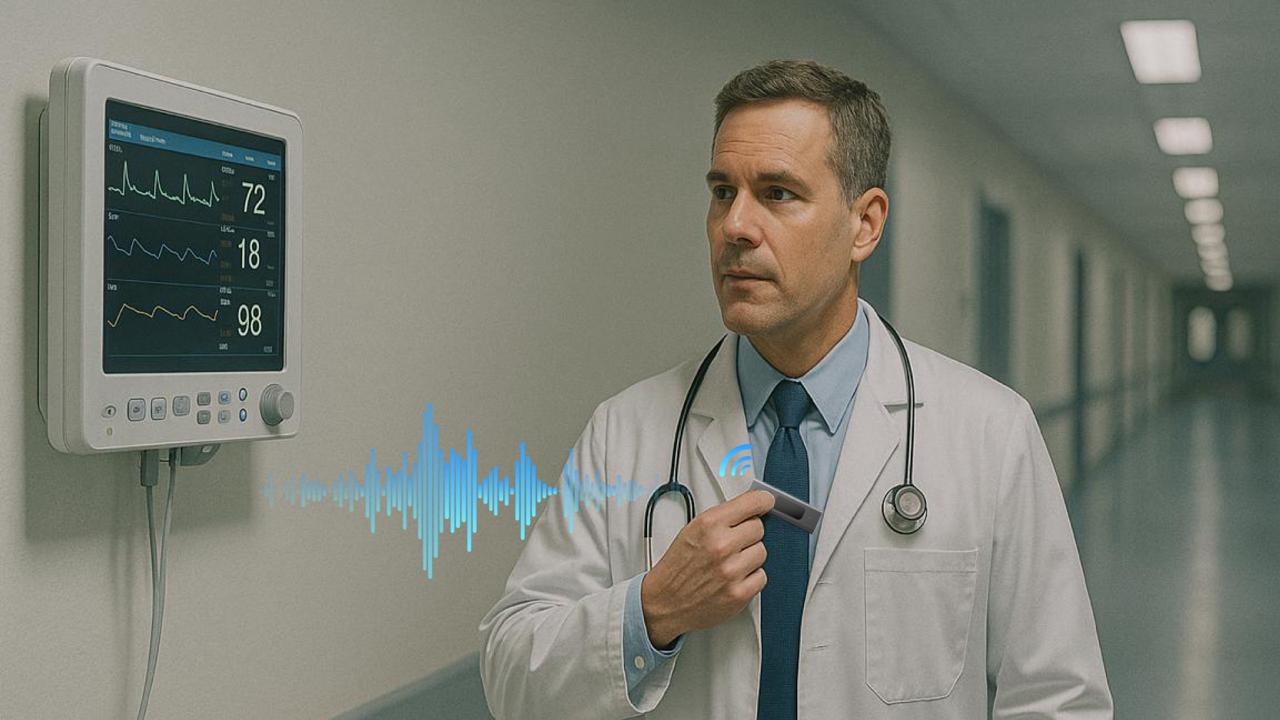In today’s healthcare system, one of the most pressing challenges physicians face is not just treating patients—but documenting every interaction accurately. Electronic Health Records (EHRs) have become an indispensable part of clinical practice, yet the burden of manual data entry continues to overwhelm doctors, consuming valuable time that could otherwise be devoted to patient care. According to recent studies, physicians can spend up to twice as much time on paperwork as they do face-to-face with patients.
This is where voice-enabled AI scribe hardware is stepping in to transform the landscape. By combining speech recognition, artificial intelligence, and medical-grade hardware design, these devices promise to take documentation off physicians’ plates and give them back what they value most: meaningful time with patients.
What Is a Voice-Enabled AI Scribe Device?
At its core, a voice-enabled AI scribe device is a dedicated piece of hardware that listens to clinical conversations, transcribes them in real-time, and intelligently generates structured notes that can be seamlessly integrated into an EHR system. Unlike general-purpose tools like mobile apps or dictation software, these devices are specifically engineered for clinical settings, ensuring higher accuracy, privacy compliance, and hands-free convenience.
Some of the core features include:
-
Advanced speech recognition trained on medical vocabulary and specialties.
-
Context-aware AI models that distinguish between doctor, patient, and even family members in the room.
-
Secure cloud or on-device processing that complies with HIPAA and other regulatory requirements.
Integration-ready APIs that allow notes to flow directly into existing EHR platforms.
Why Hardware Matters
Many clinicians already experiment with software-only solutions, such as AI scribe apps on smartphones or laptops. But purpose-built hardware adds a unique layer of reliability and ease:
-
Always on, always ready: Doctors don’t need to open apps or adjust microphones; the device sits quietly in the exam room and activates as needed.
-
Noise-cancellation and directional microphones ensure that recordings capture only the intended voices, even in busy clinics.
-
Medical-grade durability: Hardware is designed to withstand frequent use, sanitization, and the fast pace of healthcare environments.
-
Battery life and connectivity optimized for long shifts without interruptions.
Simply put, specialized hardware removes the friction points that often prevent adoption of software-only AI scribes.
Benefits for Doctors and Patients
The impact of voice-enabled AI scribe hardware extends beyond convenience. It reshapes the doctor-patient relationship and the broader clinical workflow:
-
Reduced Burnout
Physicians no longer need to spend late evenings catching up on charting. Automating note-taking eases mental fatigue and reduces burnout rates. -
Improved Accuracy
AI-powered scribes can generate structured documentation that follows clinical standards, minimizing human errors and missed details. -
Patient-Centered Care
Freed from typing and screen time, doctors can focus entirely on their patients—listening, empathizing, and maintaining eye contact. This strengthens trust and improves satisfaction. -
Scalability Across Specialties
Whether in primary care, radiology, or psychiatry, the technology can be tuned to capture specialty-specific terminology and workflows.
Operational Efficiency
Clinics and hospitals benefit from faster turnaround of clinical notes, streamlined billing codes, and reduced reliance on human scribes.
Challenges and Considerations
As with any emerging technology, voice-enabled AI scribe hardware brings important questions:
-
Privacy and Security: Ensuring sensitive health conversations are protected is non-negotiable. Vendors must maintain HIPAA compliance and robust encryption.
-
Accuracy Across Accents: AI models need continual training to accommodate diverse accents, dialects, and speech patterns in clinical practice.
-
Cost and Accessibility: While the long-term ROI is significant, upfront investment may be a barrier for smaller clinics.
-
Physician Trust: Doctors need assurance that the notes generated are reliable, minimizing the need for extensive edits.
These challenges represent opportunities for innovation, as companies refine their hardware and algorithms to meet real-world needs.
A Glimpse Into the Future
The rise of voice-enabled AI scribe hardware signals a broader shift in healthcare: technology that works with doctors, not against them. Just as stethoscopes once revolutionized bedside diagnosis, AI-powered scribe devices may become a standard tool in every exam room.Looking ahead, we may see even deeper integrations—AI that not only documents but also suggests diagnostic insights, flags potential risks, and streamlines follow-up care. The combination of voice input, AI intelligence, and specialized hardware will shape a future where doctors spend less time documenting illness and more time fostering wellness.

